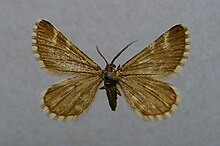
Eastern Europe is a subregion of the European continent. As a largely ambiguous term, it has a wide range of geopolitical, geographical, ethnic, cultural, and socio-economic connotations. Its eastern boundary is marked by the Ural Mountains, whilst its western boundary is defined in various ways. Most definitions include the countries of Belarus, Russia, Ukraine and Moldova, while less restrictive definitions also include some or all of the Balkans, the Baltic states, the Czech Republic, Poland, Slovakia, Hungary, Romania, Georgia, Armenia, Azerbaijan and Kazakhstan.

Beatniks were members of a social movement in the 1950s and early 1960s who subscribed to an anti-materialistic lifestyle. They rejected the conformity and consumerism of mainstream American culture and expressed themselves through various forms of art, such as literature, poetry, music and painting. They also experimented with spirituality, drugs, sexuality, and travel. The term “beatnik” was coined by San Francisco Chronicle columnist Herb Caen in 1958, as a derogatory label for the followers of the Beat Generation, a group of influential writers and artists who emerged in the late 1940s and early 1950s. The name was inspired by the Russian suffix “-nik”, which was used to denote members of various political or social groups. The term “beat” originally was used by Jack Kerouac in 1948 to describe his social circle of friends and fellow writers, such as Allen Ginsberg, William S. Burroughs, and Neal Cassady. Kerouac said that “beat” had multiple meanings, such as “beaten down”, “beatific”, “beat up”, and “beat out”. He also associated it with the musical term “beat”, which referred to the rhythmic patterns of jazz, a genre that influenced many beatniks.

A personal name, full name, or prosoponym is the set of names by which an individual person is known, and that can be recited as a word-group, with the understanding that, taken together, they all relate to that one individual. In many cultures, the term is synonymous with the birth name or legal name of the individual. In linguistic classification, personal names are studied within a specific onomastic discipline, called anthroponymy.

The Orient is a term for the East in relation to Europe, traditionally comprising anything belonging to the Eastern world. It is the antonym of the term Occident, which refers to the Western world. In English, it is largely a metonym for, and coterminous with, the continent of Asia – loosely classified into Southwest Asia, Southeast Asia, South Asia, Central Asia, East Asia, and sometimes including the Caucasus. Originally, the term Orient was used to designate only the Near East, but later its meaning evolved and expanded, designating also Central Asia, Southwest Asia, South Asia, Southeast Asia, or the Far East.
The Central Electricity Generating Board (CEGB) was responsible for electricity generation, transmission and bulk sales in England and Wales from 1958 until privatisation of the electricity industry in the 1990s.

Pieris bryoniae, the dark-veined white or mountain green-veined white, is a Palearctic butterfly of the family Pieridae.

A haplotype is a group of alleles in an organism that are inherited together from a single parent, and a haplogroup is a group of similar haplotypes that share a common ancestor with a single-nucleotide polymorphism mutation. More specifically, a haplotype is a combination of alleles at different chromosomal regions that are closely linked and that tend to be inherited together. As a haplogroup consists of similar haplotypes, it is usually possible to predict a haplogroup from haplotypes. Haplogroups pertain to a single line of descent. As such, membership of a haplogroup, by any individual, relies on a relatively small proportion of the genetic material possessed by that individual.

Tulip snail or tulip shell is the common name for eight species of large, predatory, subtropical and tropical sea snails from the Western Atlantic. These species are in the genus Fasciolaria. They are marine gastropod mollusks in the family Fasciolariidae, the spindle shells, tulip shells and their allies.

Gnorimoschema is a genus of moths in the family Gelechiidae.

Scrobipalpa is a genus of moths in the family Gelechiidae. Euscrobipalpa has sometimes been treated as a distinct subgenus, or even as a full genus, but is generally no longer recognised as valid, following Ponomarenko & Park (2007).

Tourism in Djibouti is one of the growing economic sectors of the country and is an industry that generates 53,000 and 73,000 arrivals per year, with its favorable beaches and climate and also including islands and beaches in the Gulf of Tadjoura and the Bab al-Mandab. The main tourist activities are scuba diving, fishing, trekking and hiking, discovering the nomadic way, bird watching, and sun, sea and sand.

The Iranian peoples or Iranic peoples are a diverse grouping of peoples who are identified by their usage of the Iranian languages and other cultural similarities.

Fasciolariidae is a family of small to large sea snails, marine gastropod mollusks in the superfamily Buccinoidea. Species in Fasciolariidae are commonly known as tulip snails and spindle snails.

Narraga is a genus of moths in the family Geometridae.

Eusphecia melanocephala is a moth of the family Sesiidae. It is found in central, eastern and northern Europe and parts of western Europe as well as Asia. The range extends from the Pyrenees, through southern France and central Europe into Asia. In the north, it can be found up to Fennoscandia and in the south down to the southern edge of the Alps and the northern Balkans.
Hecatera cappa is a species of moth of the family Noctuidae. It is found in Morocco, Algeria, central and south-eastern Europe, Turkey, Transcaucasia, Israel, Lebanon, Jordan, Iran and central Asia.

Fasciolaria tulipa, common name the true tulip, is a species of large sea snail, a marine gastropod mollusk in the family Fasciolariidae.

Narraga tessularia is a moth of the family Geometridae. It is found in Slovakia, Austria, Hungary, Romania, Bulgaria and Russia.

Cinctura is a genus of fasciolariid sea snails known as the banded tulip shells. Species in this genus were previously grouped in the closely related genus Fasciolaria.
Haplogroup P1, also known as P-M45 and K2b2a, is a Y-chromosome DNA haplogroup in human genetics. Defined by the SNPs M45 and PF5962, P1 is a primary branch (subclade) of P.


















